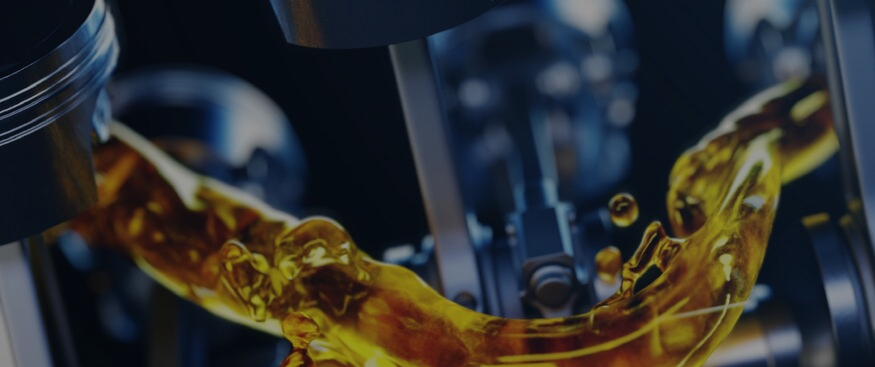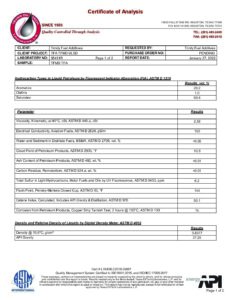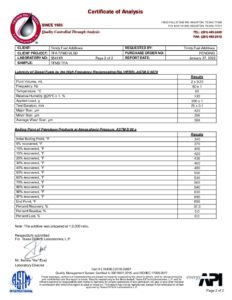TFA FORMULAS FIELD TRIAL RESULTS
ORIGINAL FORMULA FIELD TRIAL RESULTS
TFA RESULTS IN LARGE ENGINES
2017 Freightliner Coronado (class 8 semi) Engine tuned up to maximize HP and torque. Operating on road diesel (ultra-low sulfur diesel). Trials performed during MAY 2022. Cross country trip from NC to AZ, baseline of 3.2mpg. After use of TFMD-3, 3.9mpg. Fuel Economy Improvement 21.88%
- Notes: When purchased, this vehicle initially had better fuel economy, but the operator felt performance was lacking. The engine was tuned, which created a very large increase in power, but reduced fuel economy significantly. During this particular one week trial, the operator reported an idle time of 17hrs, and fuel economy was still elevated to 3.7mpg. Driver also reported having ongoing issues with an injector and had tried some popular additives to fix the problem, which did not work. With use of TFMD-3 the injector issue disappeared halfway through the first treated tank.
2020 Volvo (class 8 semi) with 56,000 miles at start of trials. Operating on road diesel (ultra-low sulfur diesel). Trials performed during APR-JUL 2021. Baseline on full load (~78-79K lbs.) 6.5 mpg. After use of TFMD-3, minimum 7.5 mpg on full load (~78-79K lbs.). Fuel Economy Improvement 15.38%
- Notes: Black smoke and exhaust pipe blackening was eliminated. Driver reported major power, acceleration, and daily total mileage gains. During trips from San Antonio to West Coast, significant gain in power and mph going up steep inclines (15-20 mph during baseline to 44-45 mph using TFMD-3 treated fuel). Driver reported less stress and more fuel savings due to product use.
2001 Freightliner (class 8 semi) with Detroit Diesel motor. Operating on road diesel (ultra-low sulfur diesel). Hauling lumber at max load. Trials performed during JUN-JUL 2021. Baseline on full load 5.5 mpg. After use of TFMD-3, 6.7 mpg. Fuel Economy Improvement 21.82%
- Notes: Trials performed in Blue Ridge Mountains. Driver reported highly improved throttle response during hill climbs and significant fuel savings. Elimination of black smoke during 2nd treated tank.
TFA RESULTS IN MEDIUM & SMALL ENGINES
2021 Toyota Tundra Trial in JUNE 2022. Only 18k miles on the engine. Operating on 87 octane. Baseline reported was 14.2 mpg. After use of TFG-3, 17.6 mpg. Fuel Economy Improvement 23.9%
- Notes: Trial performed during daily commute to work, approximately a 20 mile drive (half highway miles / half city miles).
2010 Chevrolet Suburban 94,000 miles at start of trials. Operating on 87 octane (with 10% ethanol). Trials performed during FEB-JUL 2021. Baseline over life of engine 16.044 mpg. After use of TFG-3, 19.05 mpg. Fuel Economy Improvement 18.7%
- Notes: Major improvement in engine road handling with less vibration and quieter performance. Trials performed in Louisiana and Texas.
2016 Toyota Camry (4cyl) Operating on 87 octane (with 10% ethanol). Trials performed in JUL 2021. Baseline over life of engine 29.8 mpg. After use of TFG-3, 34.8 mpg. Fuel Economy Improvement 16.8%
- Notes: Vehicle used for daily commute, a mix of highway and city travel. Driver reported improved engine performance and longer time before the need to refuel.
2020 Ford F150 (SC) w/5.0L Coyote V8 Roush Supercharger Engine output 650 hp. Operating on 93 octane. Trials performed in JUL 2021. Engine had 13000 miles at start of trials. Baseline 12.81 mpg. After use of TFG-3, 14.8 mpg. Fuel Economy Improvement 15.5%
- Notes: Daily commuter on standard route. Driver reported more power, particularly at lower RPM, and an additional 2.5 days in the typical refueling interval.
2013 Honda Pilot (V6) Operating on 87 octane (with 10% ethanol). Trials performed in AUG 2021. Baseline over life of engine 20 mpg. After use of TFG-3, 24.2 mpg. Fuel Economy Improvement 21%
- Notes: Daily commuter on standard route. Driver reported noticeable increase in power and acceleration, commenting, “It was never a speed demon, but I just wasn’t expecting to notice much of a difference…” Also reported decreased vibration and cabin noise, as well as fuel savings.
2005 Mitsubishi 380 GT Operating on 91 octane unleaded (from Australia). Fuel Economy Improvement 13%
2017 Toyota Camry (6cyl) Operating on 87 octane (with 10% ethanol). Trials performed in AUG 2021. Baseline over life of engine 29.4 mpg. After use of TFG-3, 34.9 mpg. Fuel Economy Improvement 18.7%
- Notes: Vehicle used for daily commute, a mix of highway and city travel. Driver reported less vibration/cabin noise and improved acceleration.
2011 Ford F150 Operating on 87 octane (with 10% ethanol). Trials performed during JUL 2021. Fuel Economy Improvement 15%
* Additional Field Trials for our newest advanced formulas are underway with more data forthcoming.
Mechanical & Efficiency Improvements
- 5-yr case study using original base chemistry formula
- 2007 Volvo tractor with a Cummins ISX 400 ST (EGR) engine (at the time of the final inspection on September 16, 2014, the tractor had about 675,000 miles on it)
- Truck was driven by only one owner-operator who bought it new
- Tractor had two 150-gallon fuel tanks
- Dosing ratio of 1 ounce of product to 30 gallons of ULSD was used (1: 3,840) for a period of approximately 5 years
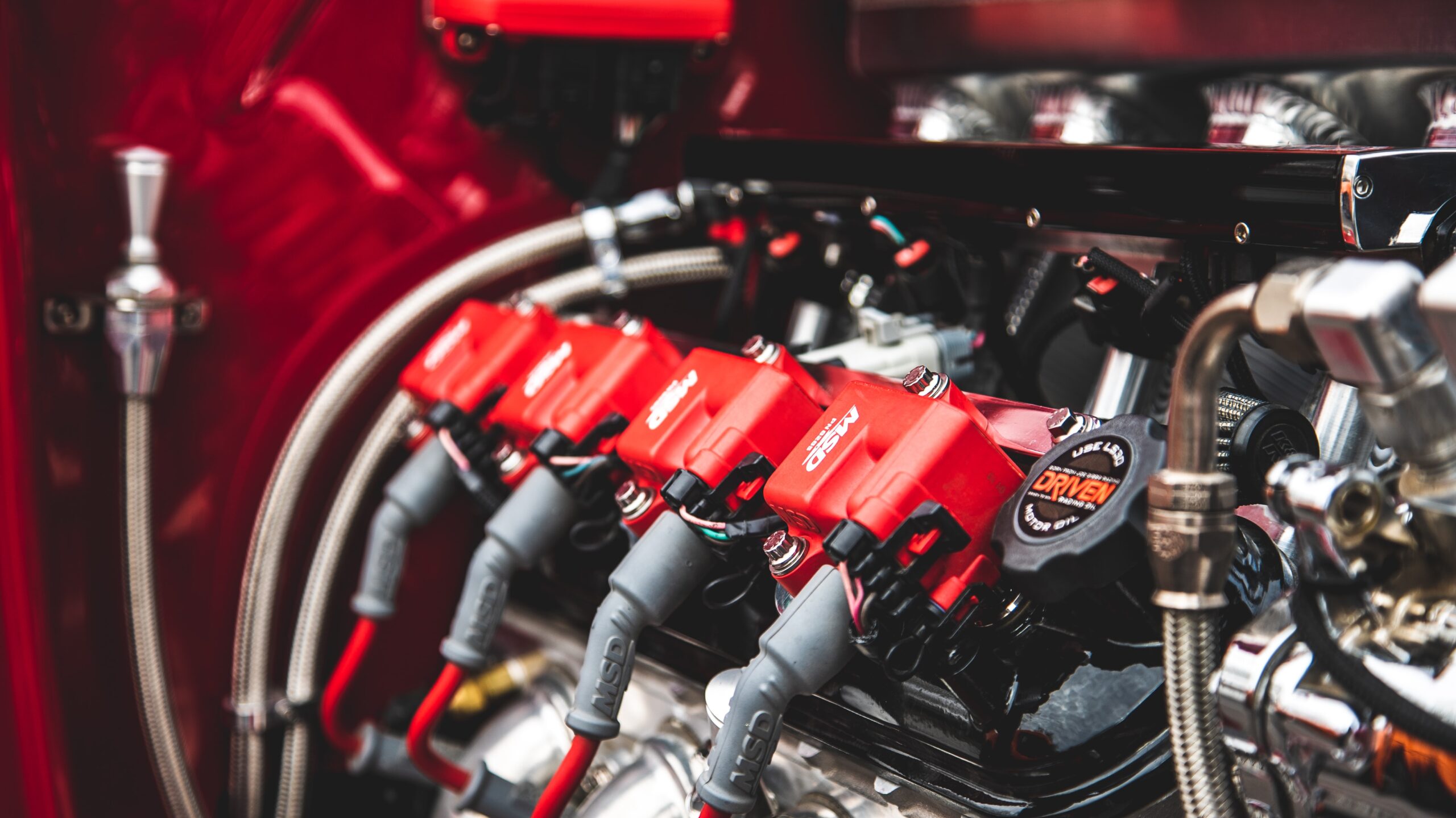
Mechanical and Efficiency Improvements - Measurements
*Summary Results
At 600,000 miles of service, visual inspection of exhaust spaces and exhaust ports showed no carbon deposition or soot buildup (for example, exhaust valve stems were shiny and clean, and exhaust ports were also clean). Chemical analysis of lubricating oil showed no soot levels, with oil changes occurring at intervals of over 100,000 miles. Engine runs quieter, more smoothly, and without black smoke during high acceleration periods. Owner uses online fuel consumption program (“Kevin Rutherford Online”) to determine average mileage; getting about 7.75 to 8.0 miles per gallon with the additive (hauling ~36-40K pounds of load); this is significantly higher for the given load than what would be expected for this engine, as compared with other equivalent tractors.
*Performance Benefits
- The engine runs quieter and more smoothly; no black smoke in exhaust, especially under high throttle conditions
- One year ago (as part of routine maintenance), truck turbocharger and EGR valve replaced, exhaust manifold dismantled, new gasket put on exhaust manifold –
- As part of this work, mechanic (Sweeten Volvo Truck Center, Houston I-10 hwy) noticed that exhaust manifold remarkably clean with no soot and carbon buildup anywhere on manifold
- This was so unusual the mechanic called to show this to Owner; mechanic shined a light inside cylinder head and showed exhaust valves and combustion chamber were completely clean with no soot buildup and carbonization
- Owner reported about 7 months after he bought truck, and prior to using additive, EGR valve failed –
- At the time of repair, noticed EGR valve completely clogged with soot, to the extent it was stuck and could not function properly
- Owner was told water jacket in EGR valve was too small and was cause of failure, and a new valve with a larger water jacket was installed
- New valve also failed within less than one year, and upon inspection was also found to be clogged with soot
- A third EGR valve was installed; around this time, Owner started using fuel additive
- Subsequently, after 2 years of trouble-free operation, Owner went in for routine maintenance and opened EGR valve to see its condition (not because it had failed); upon inspection, observed no soot or carbon deposition but only a light carbon film the consistency of “baby powder” on the EGR valve surface
- An inspection of the exhaust and emissions side of the engine provided the following results –
- EGR cooler inside is cleaner
- EGR valve is not clogging up and failing
- The turbocharger insides are cleaner
- The exhaust pipe insides are cleaner without the heavy soot buildup experienced earlier
- Overall, Owner reports a reduction in his maintenance and operating costs, and has recommended the product to several other truck owners
